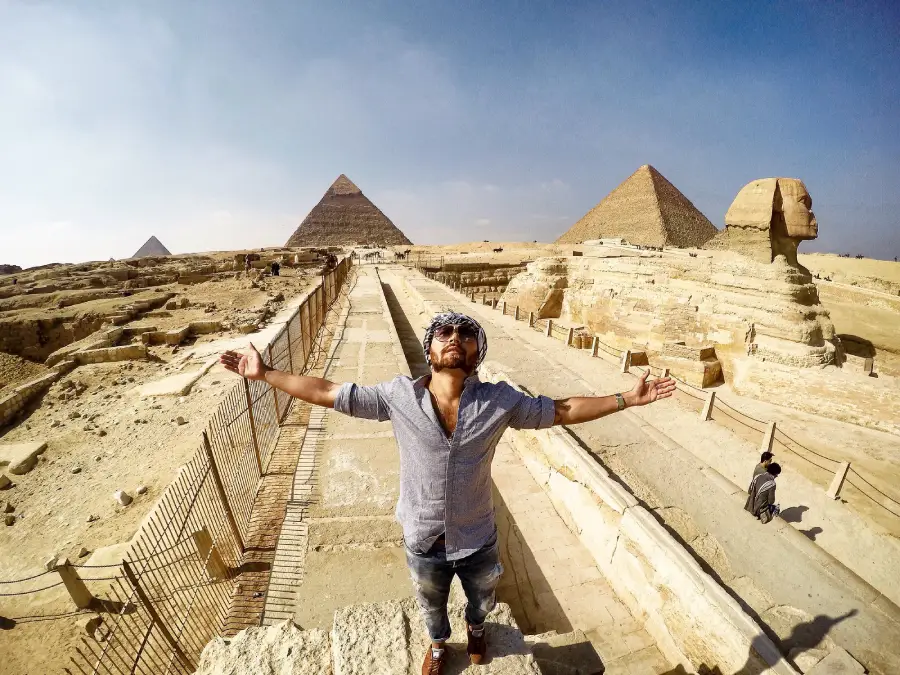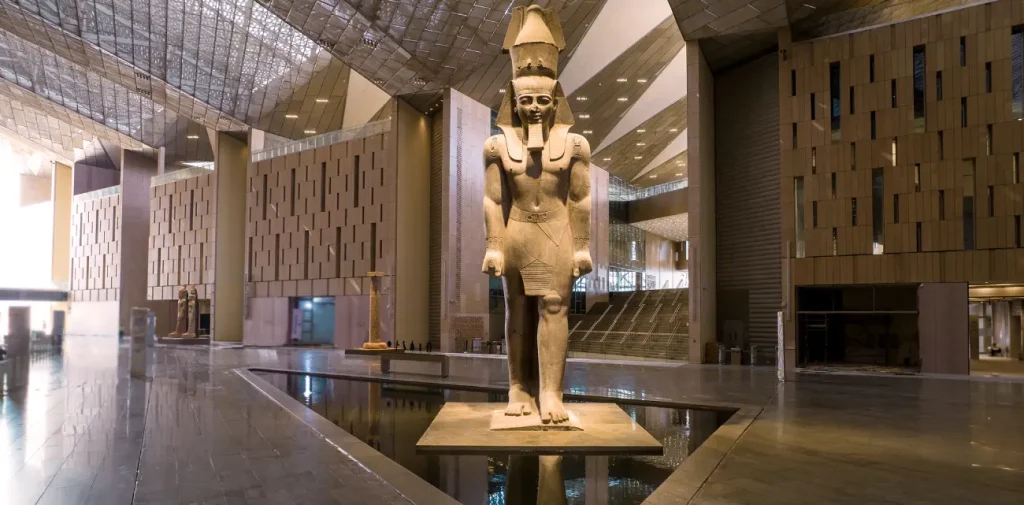
15 Tourist Attractions in Egypt, Welcome to Cairo, Egypt’s bustling capital and home to some of the world’s most iconic historical sites and vibrant culture. Nestled along the banks of the majestic Nile River, Cairo offers a mesmerizing blend of ancient wonders, modern charm, and a vibrant local scene. Whether you are a history buff, a culture enthusiast, or simply seeking an adventure, Cairo has something for everyone.
While the historical and cultural attractions of Cairo are undeniably mesmerizing, the city also pulsates with a vibrant modern energy. Explore Zamalek, an affluent neighborhood on Gezira Island, known for its leafy streets, chic boutiques, and trendy cafes.
Unwind in one of the charming riverside cafes, sipping on a cup of traditional Egyptian tea or indulging in a delicious shisha.
There is no doubt that Cairo is the capital of Egypt and is considered the heart of the city. 15 Tourist Attractions in Egypt,
It is full of tourist attractions and is worth a visit with all its historical Islamic and Coptic landmarks.
However, there are problems you will face, such as traffic congestion, as Cairo is crowded with people, Despite all this, it’s actually very safe, thanks to the presence of tourist police to protect tourist sites.
Cairo is certainly full of famous tourist attractions, some of which are inside Cairo and others outside Cairo. There is no doubt that when visiting Egypt, you must visit all the attractions and take an enjoyable tour to learn about history and civilization.

Pyramid of Djoser at Saqqara, the burial place of the famous Pharaoh Djoser in the Third Dynasty It is a long technical development in ancient Egypt. It is a new architectural form because it is the first of the step pyramids.

Dahshur Pyramids represent the southern end of the vast pyramid field that begins at Giza. In addition to large-scale tomb complexes built for queens and nobles from Memphis until the Thirteenth Dynasty. Dahshur also boasts two of the best preserved ancient pyramids in Egypt.
Both were built during the reign of King Senefru (2613-2589 BC), founder of the Fourth Dynasty, and the curved pyramid and the red pyramid in Dahshur are tremendous evidence of architectural development.
King Sneferu built himself another pyramid located two kilometers from the first. In fact, this was the first perfect straight-sided pyramid ever made. This pyramid is known as the Red Pyramid of Dahshur because its inner burial chamber was made of pink limestone. In fact, we can see that the pyramid contains three small chambers with high walls.
The curved pyramid of Sneferu is the southern pyramid and was built first. There is no doubt that the architect who built the pyramid made a mistake, which led to the completion of this pyramid at an angle, 15 Tourist Attractions in Egypt.
It is made of limestone The area surrounding the pyramid includes other pharaonic structures such as the small temple housing a single shrine and the small sub-pyramid.
Founded around 3050 B.C.E. by the first pharaoh of Egypt, Menes, the ruins of the city are located 19 km south of Cairo, on the west bank of the Nile. The local god was Ptah.
For much of Egyptian history, Memphis was the most important city of the country and the economic center of the kingdom, undisputed capital from Dynasty I to VIII, reviving during the reign of Ramses II and Merenptah.
When other cities such as Thebes, Pi-Ramses, Tanis or Sais held the capital, it was still called the Balance of the Two Lands, the most important center of the country.

Located on the Giza Plateau, the Grand Egyptian Museum is a stunning work that will allow you to see more than 100,000 artifacts first hand. It began in 2002, after an international architectural competition called for to design a new museum that would include valuable Egyptian archaeological finds.
Your visit will include the King Tutankhamun Halls, the main exhibition halls, the Grand Lobby, the Grand Staircase, the Khufu Boat Museum, the commercial area, and the outdoor gardens, for an exceptional experience that combines ancient history with the splendor of contemporary design.
located in the heart of Islamic Cairo, very close to Bab Zuwayla, is one of the most important and oldest mosques in the city.
Since its foundation and until today it has been a center of studies. It is the second oldest Islamic university in the world and the most important in the teaching of Islamic law (Sharia) and Shiite theology in its origins, and Sunni from the twelfth century.
Is a huge medieval-style shopping mall where you will find everything you can imagine, and what you can’t imagine as well. This Khan El Khalili Bazaar, full of stalls and stores will take your breath away. Lose yourself in its narrow streets and enjoy the sounds, smells and fantastic treasures that you will find in this Cairo bazaar.
Al-Moez Street is named after the Fatimid Caliph Al-Moez, who annexed Egypt under Fatimid rule, and this street has great historical importance, as it is the oldest street with an Islamic architectural character in the world, and it Al-Moez passed in his procession for the first time, where Salah al-Din al-Ayyubi lived, and the historian Al-Maqrizi also lived in it, the novelist Naguib Mahfouz was born in it. President Gamal Abdel Nasser studied in a school located in it.
Also known as the Church of the Virgin Mary or El Muallaqa, is one of the oldest churches in Egypt and is located in its capital, Cairo. Its name comes from the fact that it is built on top of the Roman fortress, Additionally,on top of which were placed palm tree trunks, with a layer of stones, to form the floor of the chapel.
Is the oldest synagogue in Egypt. It was supposedly built on the site where Moses called upon God to put an end to the hail and pestilence. The synagogue is especially famous for the Geniza (meaning storehouse) documents stored there since 1041, rediscovered after 1864 and since 1896 located primarily in the Cambridge University Library.